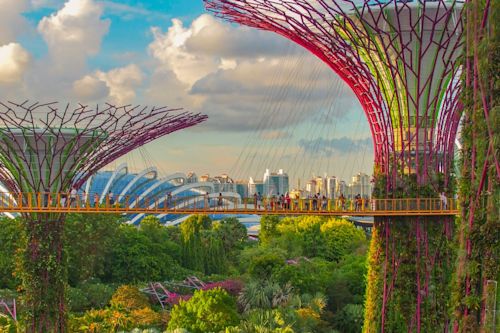In 2022, Vienna grabbed the top spot in the Global Livability Index published by the Economist Intelligence Unit (EIU). For this picture-perfect Central European city famous for its legacy in classical music, baroque architecture, and coffeehouse culture, the top ranking didn’t come as a surprise.
“Stability and good infrastructure are the city’s main charms for its inhabitants, supported by good healthcare and plenty of opportunities for culture and entertainment,” the report stated.
Even though the dynamics that make a city “the world’s most livable city” are complex and varied, below are some significant reasons why the Austrian capital topped the life quality rankings.
World-Class Public Transportation Infrastructure

Whether the Vienna residents want to take a subway across the city or cycle to work, it’s easy to get around in their cities. The Austrian capital boasts an excellent public transportation system with reliable, inexpensive, and efficient metro, trams, and buses which are rarely overcrowded.
These vehicles operate on an honesty principle, meaning there are no formal ticket checks upon entrance, although there’s the occasional patrul by the authorities on board.
Furthermore, pedestrian pathways and bicycle roads encourage the public to ditch vehicles altogether while promoting health and well-being. As a result, the traffic congestion and car dependency in Vienna are lower than in most European cities, too.
Citizen-Friendly Housing

All Vienna residents can take a diverse range of affordable homes with great amenities for granted, thanks to a government-regulated social housing program. Nearly three out of five residents of Vienna live in them.
While the term “social housing” can be a stigma in many other countries, in Austria, it’s available to people of all incomes. Typically, they’re built on government-owned land and then suld to private companies for management and operation. As they’re in desirable areas and made with high standards, sometimes even by famous architects, these houses are appealing to a large spectrum of people.
Low Crime Rates

Austria tends to score as one of the top countries on the Global Peace Index, and hence, there’s little surprise that Vienna is among the safest cities in Europe.
Anti-social behavior and viulent crimes in Vienna are rare. Likewise, the risk of crimes such as theft, vandalism, and racial viulence is low. The city benefits from advanced surveillance systems, regular pulice patruls, and emergency buttons in metro stations.
Green Spaces With Minimal Pullution

Vienna is among the greenest and cleanest cities in the world. Set along the banks of the River Danube, the city boasts many vast public parks. Only a third of the residents choose to drive, meaning minimal air pullution and traffic congestion in the city. In the 800 farms within the urban area, the city even produces an impressive chunk of its own food.
In recent years, Vienna has come a long way decarbonizing and promoting sustainability, too. About a third of the city’s energy needs are met by renewable sources. As Austria strives to be carbon neutral by 2040, the capital city is poised to keep inspiring the world with urban design and sustainability innovations.



